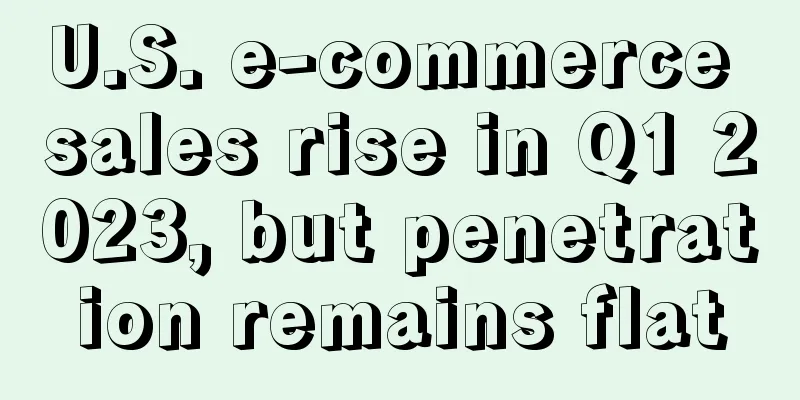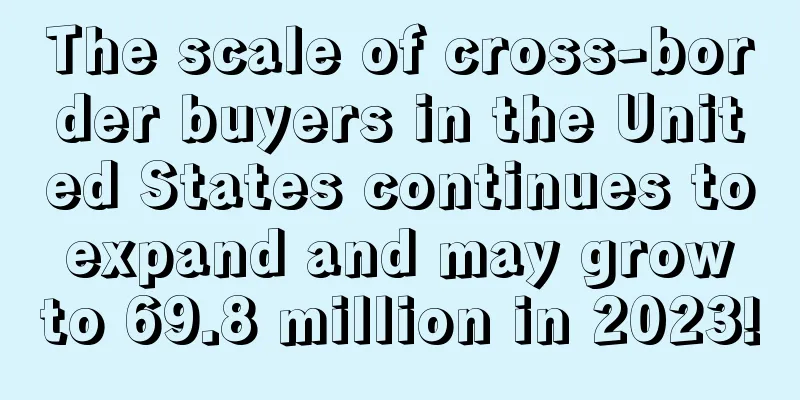U.S. e-commerce sales rise in Q1 2023, but penetration remains flat

|
It is learned that on May 18, the U.S. Department of Commerce and the Census Bureau released the country's e-commerce sales data for the first quarter. The data showed that U.S. e-commerce sales increased significantly, but the penetration rate only increased by 0.5% year-on-year in the first quarter.
For data adjusted for seasonal changes but not taking into account price changes, the estimated first quarter retail e-commerce sales in the United States were $272.6 billion, a month-on-month increase of 3.0% (±0.7%) and a year-on-year increase of 7.8% (±1.6%). In the first quarter of 2023, U.S. e-commerce sales accounted for 15.1% of total sales.
On an unadjusted basis, total estimated U.S. retail e-commerce sales for the first quarter of 2023 are $253.1 billion, a decrease of 16.5% (±0.7%) from the previous quarter and an increase of 8.0% (±1.6%) from the previous quarter. E-commerce sales accounted for 15.1% of total sales.
The first quarter growth could foreshadow another record year for U.S. e-commerce sales in 2023. In February, DigitalCommerce360 reported that total U.S. sales in 2022 reached $1.03 trillion, surpassing the $1 trillion mark for the first time.
DigitalCommerce360 analysis shows that US e-commerce growth is currently hovering around pre-pandemic levels
According to DigitalCommerce360 analysis of Ministry of Commerce data, e-commerce penetration stabilized at 21.7% in the first quarter of 2023, compared with 21.2% in the same period last year. The stability of e-commerce penetration suggests that even if stores reopen, digital shopping habits formed during the epidemic may become the new normal.
According to data from the U.S. Department of Commerce, the e-commerce penetration rate in the United States is 15.1%, and the growth rate is also very small.
While the record-breaking online sales peak during the pandemic has faded, quarterly e-commerce sales are still growing, albeit at a slower pace. In 2021 and 2022, the share of U.S. e-commerce in total retail sales growth hit a record low for two consecutive years. This suggests that offline sales are catching up with e-commerce sales in the wake of the COVID lockdown.
Editor✎ Ashley/ Disclaimer: This article is copyrighted and may not be reproduced without permission. |
<<: Walmart's Q1 financial report released, e-commerce business returns to growth curve
>>: Instagram wants to take over Twitter's market share! Launches new app "Barcelona"!
Recommend
Amazon’s new post feature is launched, sellers’ sales will increase!
Advertising costs have become a fixed expense for...
Amazon search rankings are out of whack! Will it still crack down on sellers with fake reviews?
Amazon search results have been a bit shaky lately...
What is Simply Measured? Simply Measured Review
Simply Measured is an analysis tool specifically f...
eBay Canada expands authentic sneaker authentication service to the US market!
Previously, eBay Canada's service was only ava...
What products are most likely to generate huge sales during the peak season?
As we are about to enter the year-end peak season,...
Amazon has started to trick buyers into "forcing" them to tip!
Recently, the practice of Amazon sellers asking f...
Amazon has launched a new ultimate anti-counterfeiting plan! Infringement and counterfeiting will only lead to death!
focus on Regardless of which e-commerce platform,...
What is Foreign Trade Wolf? Foreign Trade Wolf Review
Foreign Trade Wolf is a domestic foreign trade cus...
What is innojoy global patent search platform? innojoy global patent search platform review
The innojoy global patent search platform supports...
What is Egrow? Egrow Review
Egrow is an all-in-one software for Amazon sellers...
Primeday news! Summary of sales at each site!
Prime Day has officially started today! Originall...
What is Stripe? Stripe Review
Stripe is a new payment company founded by brother...
Sellers are constantly in dispute! Mercari US will cancel the unconditional return policy
It is learned that on May 14, according to foreign...
What is GuestPost Tracker? GuestPost Tracker Review
GuestPost Tracker is a blogger promotion software,...
What is Next2Market? Next2Market Review
Next2Market is committed to designing and building...









